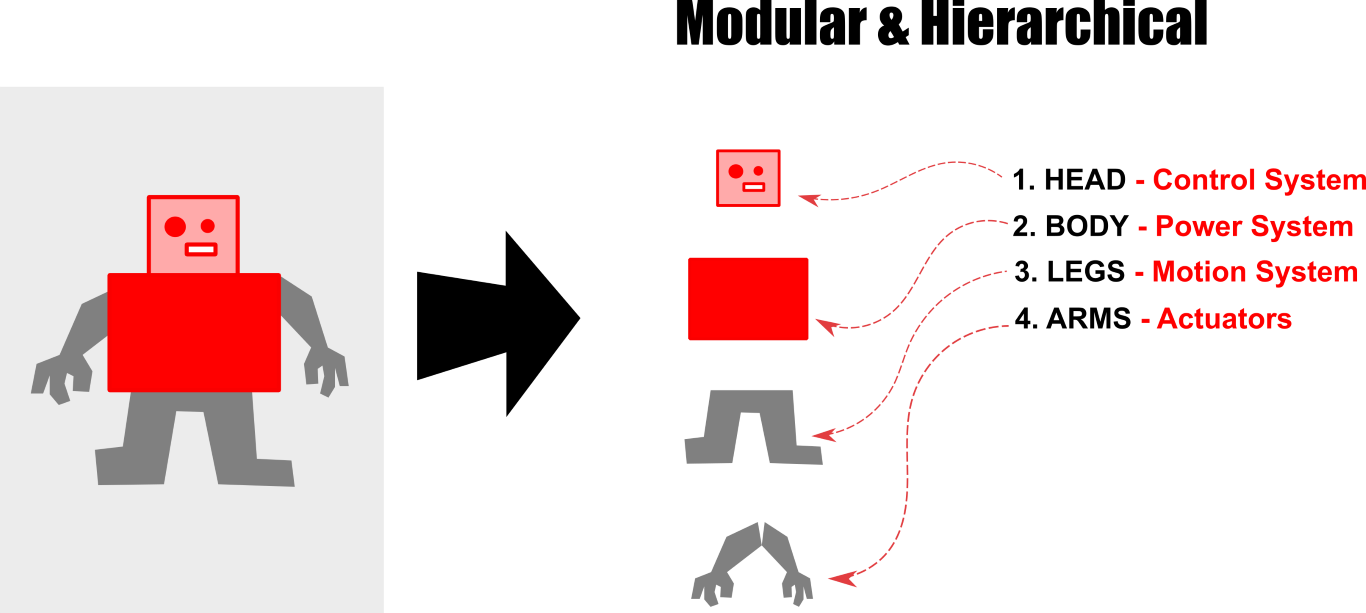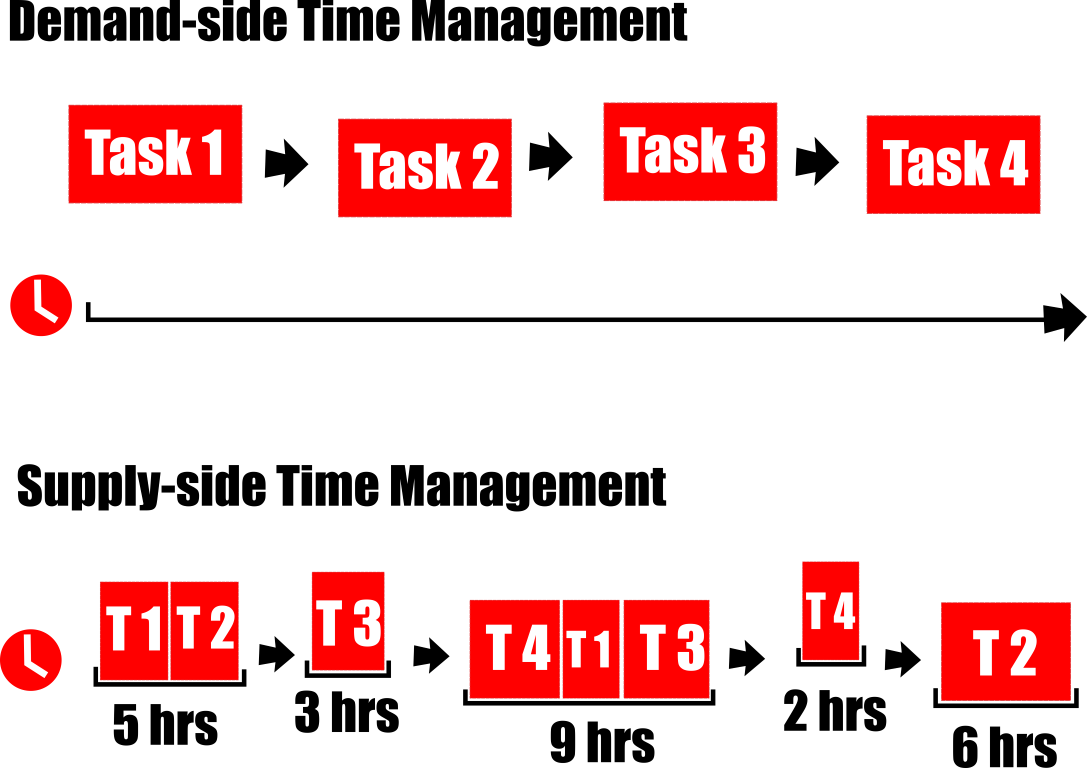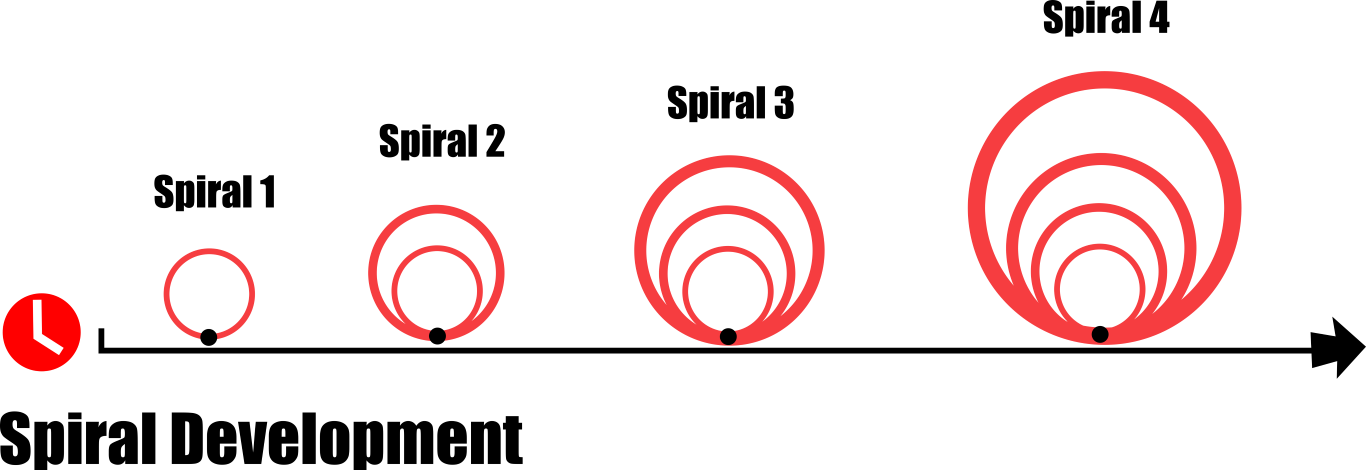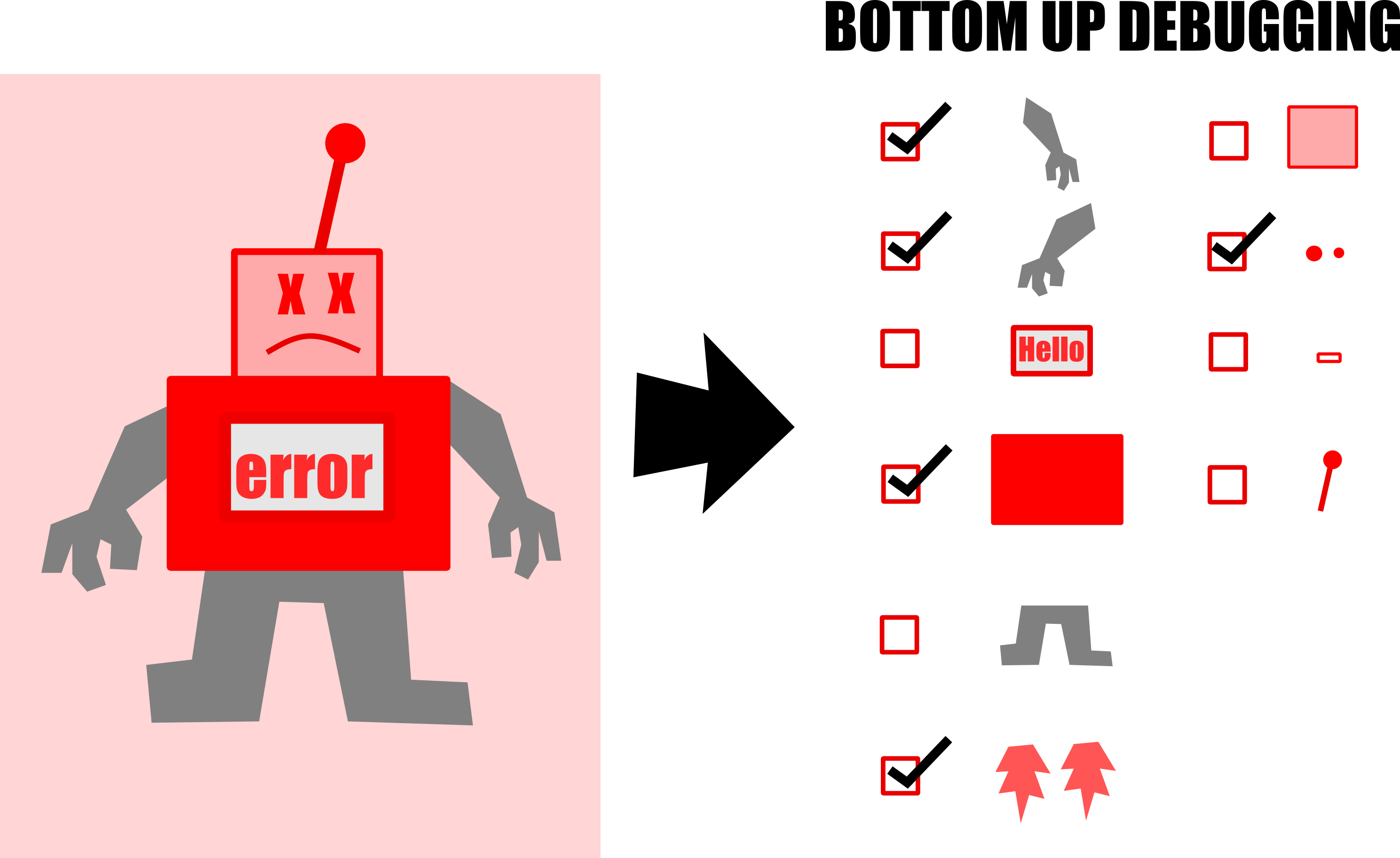Tips for Successful Project Management#
- Author : Rico Kanthatham (Fablab Kamakura)
- Date created : 1/30/2020 (edited 1/27/2021)
Project Management#
Project Management (PM) is the first important skill that you will need to master in Fab Academy. The goal of PM is to complete a challenging project (all of your Fab Academy coursework) in a limited and defined time frame.To successfully graduate from Fab Academy, you will need to master the important skills to research, complete assignments, document your process…all within a specified period of time.
Project Management Techniques - Overview#
- Modular & Hierarchical Planning…conceive and plan your project in smaller, easier to complete, modular components that are arranged in a hierarchy of importance.
- Supply-Side Time Management…completing a project by organizing the project time, not the project tasks
- Spiral Development…complete the bare minimum version of the project, then incrementally improve it with added features and refinements
- Parallel Development…working on several project tasks in parallel, not one after another (serial)
- Triage…dynamically prioritizing critical tasks over non-critical tasks
- Bottom-up Debugging…perform debugging on smaller, simpler component parts of a project, not on the entire, complex project
- As-You-Work Documentation…document your work incrementally from the beginning, rather than wait until the project is finished to start.
Modular & Hierarchical Planning#
Conceive and plan your project in smaller, modular components that are each arrange in a hierarchy of importance.
For every project or weekly assignment, take time to review and break down the work before you begin. Instead of seeing the project or assignment as one, big and complex task, see it as a combination of smaller, modular, inter-related, easier to understand “Sub-Tasks” components.

For example, if you are building a robot project, see it as a combination of robot head project, robot arm project, robot leg project, robot body project, etc. Once you have your big project broken down into sub-tasks (and even sub-sub-tasks…the eye assembly, mouth assembly, ear assembly…in the robot head, for example)…make an effort to rank the project in hierarchical and sensible order of importance. For example, robot head first, then body, then arms and legs.
Supply-Side Time Management#
Completing a project by organizing the project time, not the project tasks.
Throughout the Fab Academy course, you will hear Neil talk about “Supply-Side Time Management” (SSTM) as one of the most important skill that every Fab Academy should learn. Without exaggeration, SSTM is probably the key to surviving Fab Academy.
Simply described…SSTM is a time organization method to divides weekly available work time into discrete segments, then fills those segments with discrete tasks to be completed for the week.” By keeping assigned tasks contained within their schedule time segments in a disciplined manner, time and task management can become efficient.

Every week, Fab Academy tasks will require many working hours from you to complete and document properly, and you may soon begin to feel that there is not enough time to complete them.The SSTM technique will help ensure you can finish your assignments in the available time…by organizing your time.
How to use SSTM:#
- Begin with deciding how much “Total Time” in the week you will have to work on your weekly assignment…ex: 25 hours each week
- Break down the “Total Time” into smaller “Work Session” segments..ex: 3 hours Thursday, 8 hours Friday, 3 hours Saturday, 8 hours Sunday, 3 hours Monday
- List all the “Task Components” required to complete your weekly assignment and the estimated amount of time required to complete each of them.…ex: research >> 3hrs, work >> 10hrs, documentation >> 5hrs
- Assign the “Task Components” into a time-appropriate “Work Sessions” segments…ex: research on Thursday, work & document on Friday, research on Saturday, work & document on Sunday, document on Monday.
- Complete your weekly assignment in a time disciplined manner, stay mindful of time remaining in each work session, and use the triage technique to complete each component task in the work session it is assigned to…avoid extending work from one work session into the next work session.
“Have the time control the tasks, not the tasks control the time.” Neil Gershenfeld
Spiral Development#
Complete the bare minimum version of the project, then incrementally improve it with added features and refinements
Spiral Development is a method to plan project work so that an acceptable, functioning version can be completed in a limited amount of time. Spiral Development conceives of a project in incrementally improved versions, starting with the most basic, “bare minimum” version. The idea is that after the “bare minimum” functioning version is completed, if time is still available, incrementally better versions that include additional features or improvements can be done.

Imagine working on the “bare minimum” project as drawing a small circle…starting and ending at the same point after drawing in a tight curve motion. Once you arrive at the starting point, if time allows, start drawing another circle (the second version of the Project), this time with a slightly bigger radius than the first…to end up at the same starting point as the first, smaller circle (bare minimum version). This second circle represents the second version which is larger in scope and features than the first. Repeat this process to drawing increasingly bigger circles (incrementally increasing the scope by making improvements to the original simple project version) until no more time remains.

Spiral Development helps to guarantee that when the time period ends, you have a completed project…even if it is a simpler one.
Parallel Development#
Work on several project tasks in parallel, not one after another (serial)
Each “Task Component” is distinct from the others and has its own beginning and end. Parallel Development suggests that “Task Components” are completed at the same time rather than one after another. - Work on one “Task Component” to some percentage completion, then stop. - Work on the next “Task Component” to the same percentage completion as the first, then stop. - Repeat this method with every other “Task Component” until they all reach the same percentage completion…before returning to the first “Task Component” to continue work on it.


Using the robot example, make the supporting mechanical structure for the robot head, then move to make the support frame for the body, arms and legs. When all the frames of the robot are done, go back to the head to work on the electronics, moving to body, arms and legs electronics when the head electronics is done.
Triage#
A technique to prioritize critical tasks over less-critical tasks.
With a limited time each week to complete your assignments, it is important that you decide before you start your project what tasks are more or less important than others to complete. As time remaining becomes less and less, choose to work on critical tasks (tasks needed to complete your weekly assignments) and abandon non-critical tasks (not necessary to completing your weekly assignment).
For example, if you are building a robot, it is more important to complete work on the supporting mechanical structure and internal electronics than to work on the decorative outer shell. Even without the outer shell, the robot can be tested for movement and other functionality.
Bottom-up Debugging#
Perform debugging on smaller, simpler component parts of a project, not on the complex, overall project
It is difficult to “debug” (find a solution to a problem) a complex project using a “Top Down” technique because there are many variables to consider that may be causing the problem. Debugging is usually easier when it is done on the smallest sub-components, one at a time…”Bottom-up” technique.

For example, if the robot we are building is not functioning, it is best to look at each sub-system one at a time and eliminate each as the cause of the problem. Test to see if each sub-system of the robot head is working (Primary controller, electrical wiring, mechanical linkages, power system, etc.) and fix any non-functioning component. When that is done, move to the next major sub-group (the robot body) and debug each of that group’s sub-systems, fixing any problems that you find.
Solving problems in simpler, smaller component groups is easier to do than to try to work on a large complex group.
As-You-Work Documentation#
Document your work incrementally from the beginning, rather than wait until the project is finished to start.
It will take you approximately 20-30 hours a week to complete your assignment. If you wait until you are done with your assignment or project to document your work, you will forget many things and end up with incomplete documentation. It is much better to document from the beginning of your work session and do so consistently and constantly during the entire work session. Take notes. Take photos. Take videos. Frequently and continuously! At the end of the work week you will have much more documentation than you need…but it is easier to delete than not to have documentation and have to recreate it (and waste time doing the same thing twice).
Other Project Management Tips#
-
Expect to spend between 20-30 hours per week working on Fab Academy assignments. This includes work sessions, documentation, Asia Review sessions, and Global Session participation…as well as personal research and skill-up time.
-
Assume that you will have ONLY two “Work Sessions” every week. The first session on Friday or Saturday depending on your assigned group. And a second work session on Sunday. Assume that your work sessions will start at 10:00am and last until 18:00pm.
-
Assume that “Documentation” will take a minimum of 3 hours each week to complete…including writing, translating, image manipulating, editing, uploading, etc. Start to write your documentation from Sunday afternoon and have your documentation 75%-80% completed before the Asia Review on Tuesdays.
-
Update your time schedule and SSTM plan if delays are unavoidable. No plan is perfect from beginningto end, and adjustments during the work week are inevitable. Do your best to stay on schedule, but if delays happen…stop…and rebuild your SSTM plan before continuing. Remember that the deadline time is a fixed end point.
-
It is critical that you always remain aware of the time remaining for each work session. SSTM cannot function properly unless you maintain awareness of the time remaining in each work session. Take mini-breaks every 45 minutes to rest and assess your progress. When the work session time is nearing its end (60 minutes remaining), apply triage technique to make sure that your work session project reaches a satisfactory completion status.
-
Avoid overextending the time for one component task. It is better have the component task done but imperfect, than perfect but take too much time. Of course, aim to do things perfectly, but prioritize timely task completion over absolute perfection. Overextending work into the next session means taking time away from the next task. In order to successfully complete the Fab Academy course and graduate, it is HIGHLY recommended that you complete all the work for each week in the week it is assigned. The biggest source of stress for many Fab Academy students is the amount of piled up documentation work that must be completed…when documentation work is not completed during the week it is intended for. If one week’s documentation is hard to do, imagine how hard multiple weeks of documentation would be. As time passes, it will be impossible to remember work that you did a few weeks earlier. Reduce the amount of stress you create for yourself by making every effort to complete your weekly documentation within the week. Use Spiral Development technique to complete the ‘bare minimum’ version of your documentation for each week. You can always to back to refine it later if you find you have free time.